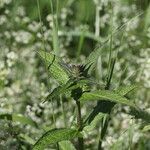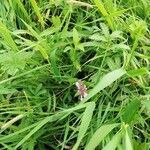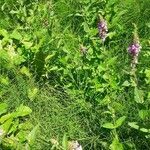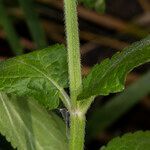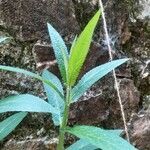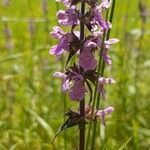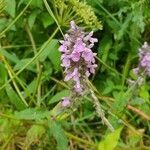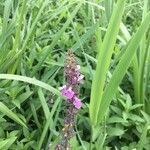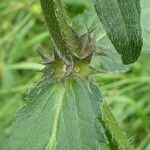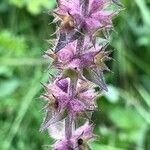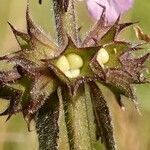Rhizomatous perennial 3–10 dm, hairy throughout and often glandular; lvs sessile or some short-petioled, the main ones lance-triangular to lance-ovate or elliptic, broadly rounded to truncate-subcordate at base, 3.5–9 × 1–4 cm, crenate; infl a series of usually 6-fld verticils, the lower often subtended by foliage lvs, the upper by progressively reduced bracts; cal 6–9 mm, the narrow lobes nearly as long as the tube; cor purplish, white-maculate, 11–16 mm, the tube abruptly expanded on the lower side at the base of the oblique internal hairy ring, and often with a small, saccate gibbosity. Moist or wet places; circumboreal, in Amer. from Que. to Alas., s. to N.Y., Ill., Mo., and Ariz. June–Aug. (S. ampla; S. arenicola; S. arguta; S. borealis; S. brevidens; S. homotricha; S. pustulosa; S. schweinitzii) Three vars. in our range:
Rhizomatous perennial herb, to at least 1 m tall, almost odourless, sometimes producing elongated tubers 8-12 cm long. Stems hispid with some bulbous-based hairs. Petioles < 1 cm long or 0 in stem lvs (basal lvs not seen). Lamina 4-10 × 1.5-2.5 cm, ± oblong-lanceolate, hairy, crenate-serrate; base truncate to cordate; apex acute or short-acuminate. Bracts serrulate or crenulate, mostly very different from foliage lvs. Calyx 7-8 mm long, densely hairy; teeth ± = tube, narrowly triangular-subulate. Corolla c. 12 mm long; tube exserted from calyx lobes, eglandular, with simple hairs outside, rosy purple; upper lip hooded; lower lip > upper lip. Nutlets not seen.
A herb. It keeps growing from year to year. It has robust underground stems. The above ground stems are branched. They are 60-110 cm high. The stalks of the stem leaves are 2-3 mm long. The leaf blade is oblong to sword shaped and 3-8 cm long by 1.2-1.5 cm wide. They are hairy. There are 6 flowers in rings and they are purple or red. The nutlets are brown and 3 sided.
